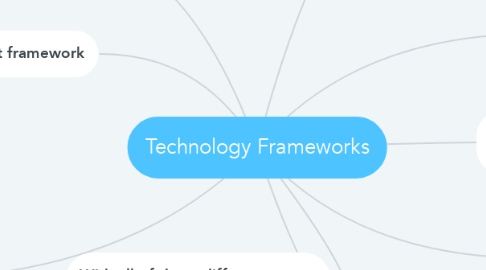Technology Frameworks
by Summer Miller

1. PICRAT
1.1. What are the students doing with the technology? Students relationship to technology: Passive. Interactive. Creative.
1.2. What is the technology use's effect on practice? Teachers use of technology replaces, amplifies, transforms. traditional practice.
2. Triple-E
2.1. This is new and focused on the tools and how they are used and implemented
2.2. The focus should first be on the content and objectives then with support from technology it develops the 3 E's: Enhancement, Engagement, and Extensions.
2.3. Ask questions that help students engage, enhance and extend their education through technology.
2.4. Is the technology enhancing the students learning?
2.5. Does the technology create opportunities for students to learn outside of their typical school day?
2.6. Engagement: We can look a little more deeply at engagement by considering if the technology is not just capturing the interest of the student, but if it is actually engaging them actively in the content
3. With all of these different frameworks there is an advancement or general increase of education because of the use of technology.
4. Triple E is the newest framework
4.1. LEARNING FIRST TECHNOLOGY SECOND!!
5. TPACK
5.1. Technological Pedagogical Content Knowledge: Full understanding of how to teach with technology in the classroom.
5.2. This is a technology integration framework that identities 3 types of knowledge instructors need to combine for successful edtech integration.
5.3. Forces you to plan with all of the dimensions. The diagram helps you know what standards and instructional strategies to use and then what technological advancements to use.
5.4. 3 Primary forms of knowledge: Content Knowledge (CK), Pedagogical Knowledge (PK), and Technological Knowledge (TK). These are critical for understanding and deeper level of meaning.
6. SAMR
6.1. Substitution: Technology acts as a direct substitute, with no functional change.
6.2. Augmentation: Technology acts as a direct substitute, with functional improvement.
6.3. Modification: Technology allows for significant task redesign.
6.4. Technology allows for the creation of new tasks, previously inconceivable.
6.5. Simple and effective way to teach!
6.6. Think of these as a spectrum^^
7. TPACK & SAMR are mostly widely known and referred to
8. Provides more of a map for understanding how to integrate technology into the classroom effectively.
9. Designed to provide a high level gauge of the degree of technology use.


